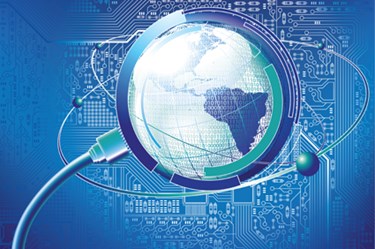The 4 As Of IoT: A Four-Step Approach To Integrate IoT

By Nick Vennaro, co-founder, Capto
The Internet of Things (IoT) is widely heralded as the next big thing. The trend to connect everything to the internet is accelerating unabated with opportunities and implications for every industry — and healthcare is no exception. Healthcare organizations cannot afford to get left behind on IoT, and they must either adapt rapidly and seize competitive advantage, or risk losing market share and revenue to early adopting organizations.
For organizations that want to take advantage of IoT, the first step is to develop and communicate a clear vision and strategy that will be the source of inspiration and focus. This is in many ways a data integration challenge which extends into both care delivery and revenue cycle. Provider and payer organizations that fail to develop a real strategy for IoT will find themselves paralyzed by a thousand one-off applications that lack any compatibility or synergy. Conversely, organizations that make IoT a useful, profitable building block of clinical or care management can unlock IoT’s potential to drive success in clinical programs, population health, precision medicine, value-based care and marketing.
The fundamentals of any healthcare organization’s IoT strategy can be boiled down to four sequential areas of focus, or the four As of IoT: Access, Aggregation, Analysis, and Artificial Intelligence.
1.Access
In the age of big data, it is crucial for healthcare organizations to develop an accurate, data-rich picture of customers, operations, performance and outcomes in order to maintain a competitive edge while also driving better business decisions, patient care and bottom line. This will mean securely and reliably accessing data from many unique and proprietary sources in people’s homes and bodies, such as embedded pacemakers, Wi-Fi scales, smart refrigerators, and other existing and planned IoT devices. This IoT data may vary in format, protocol, and real vs. non-real time, but it will contain valuable insights if leveraged effectively.
2.Aggregation
All of the data from these diverse sources must then be combined and normalized in order for it to be used effectively. Establishing a flexible data architecture is critical to supporting the most impactful analytic and reporting capabilities, and to ensuring optimal accuracy, performance, and scalability. It can also streamline data storage for rapid retrieval of a variety of data types, formats and sizes. Challenges associated with the aggregation process can be especially difficult for companies looking to employ centralized cloud integration and real opportunities for reduced latency and the performance of complex analytics on the edge. Development of a robust integration and edge computing architecture will be a necessary component for IoT success.
3.Analysis
Once equipped with a rich repository of data, companies can perform multi-tiered analysis to determine appropriate actions. Analysis can operate on multiple levels, including individual patient, specialty/specific, internal quality reporting, CMS/payer reporting (MIPS, pay-for-performance), population health and precision medicine. Based on IoT data, there are several potential actions that the organization can trigger.
For example, a simple clinical alert could entail a patient with a cardiac monitor who has periodic arrhythmia, and a cardiologist needs to follow the patient closely. In this case, the health system needs to not only identify when an abnormal cardiac reading is registered, but it also must determine the best mechanism for alerting the cardiologist and the PCP. Does the alert go into the EMR? A pager? A fax? Is this information the doctor needs right away or just when they next see the patient — if critical, this may be a candidate for edge analytics. Will there be different responses at different clinical thresholds?
For a population health example, look at using IoT data feeds to help identify trends and contributing factors relating to chronic disease predictors in specific cadres. In this case, organizations must determine how to incorporate such diverse data points as smart scale readings, refrigerator contents, daily steps, and blood glucose levels, and use them to drive incentive programs, refine risk assessments, and inform care management outreach. There is also the issue of how new science will be continually incorporated into action plans on an on-going basis.
4.Artificial Intelligence
Given the complexity and scale of the analytical and operational challenges presented by IoT, one of the final stages of IoT application will be using machine-assisted learning to identify strategic ways to put the analytics to work in real-time, such as adjusting care plans, identifying second options for treatment, and so on. Artificial intelligence (AI) in healthcare will be applied first in areas where there is not direct patient contact, such as imaging analysis, routine pharmacist work, and delivery robots such as those at El Camino Hospital in California, which save the hospital approximately $700K annually delivering drugs and carting linens.
We have just scratched the surface of the potential of for the intersection of IoT and AI to transform healthcare. Imagine if health plans used AI-powered systems to tie into real-time diagnostics data and trigger automated interventions and support services. A minor stroke or cardiac issue that today could take weeks or months or may never be detected can be responded to within minutes.
IoT And The Patient Experience
A frequently overlooked goal of IoT adoption is to improve patient experience, which, if done effectively, can make or break healthcare brands in competitive markets. Use cases for IoT are strongest in home health, developing an IoT strategy is not just good economics but also leads to improved patient experience, especially because patients prefer to be at home. Furthermore, as patients generate more and more personal data, health organizations that make patients feel like that data is being intelligently consumed, and used wisely to improve care and quality of life, will win big, especially with those in Gen X and Y.
